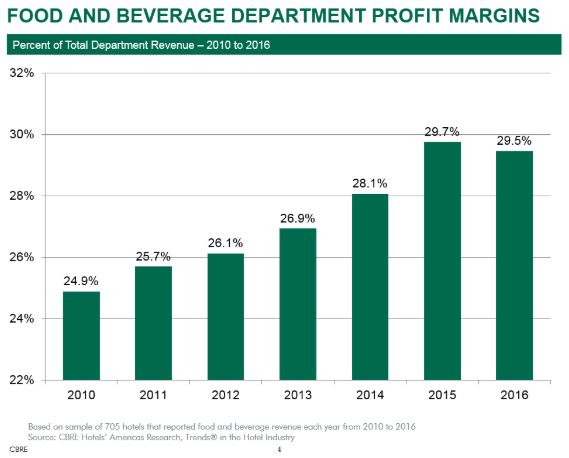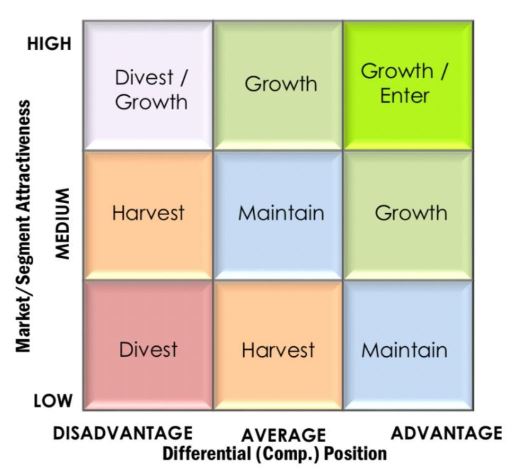Food and Beverage Boosts Hotel Revenue
Hotel investment transaction volumes increase every year which makes it more challenging for hotels to compete. The questions remains: how do hotel owners thrive in this environment?
According to an AMPM Hotel supply statistics (October 2018), approximately 150,000 new hotel rooms are expected to enter London by 2020. Research by Knight Frank indicates that investment in the UK hotel industry reached £7.4 billion, demonstrating a 29% year-on-year rise and a £1.7 billion increase in 2018 alone. This extraordinary growth was due to a 50% increase in international investment, with overseas buyers accounting for £4.9 billion invested into the UK hotel market with Asian investors such as mainland China, Singapore and Hong Kong being principally responsible.
Over the past several years, boutique hotels have been especially popular among hotel developers. Examples of Boutique-Lifestyle Brands/Luxury include Belmond, Montage, Thompson, and Boutique-Lifestyle and Brands/Upper-Upscale including Affinia and Joie De Vivre. These trends are attributable to the push to achieve premium levels of occupancy and ADR.
There are a multitude of boutique hotels around the world and hence it is incumbent upon hotel owners to discover new and creative strategies of facilities, services and amenities to provide a personal level of service and a unique experience to satisfy and attract all guests in a captivating manner. F&B is one of the key difference makers…
Food and Beverage (F&B) is becoming a major contributor to a hotel's positioning in the market. Consumers are not only looking for a place to stay, demand for and spending on F&B have been growing, allowing the industry to net extra revenue. There are big opportunities to grow F&B and contribute to added value. Illustrative of significantly increasing F&B revenues is research from CBRE Hotel's Americas which points out that, F&B profit margins rose from 24.9% to 29.5% between 2010 and 2016.
How can a hotel owners analyze which products to invest in in order to boost hotel's revenue? GE-McKinsey nine-box matrix is a strategy tool that offers a systematic approach for the multi-business corporation to prioritize its investments among its business units.
GE McKinsey Matrix
Figure 2. depicts the GE-McKinsey Matrix. It is a framework that evaluates a business's portfolio, highlights strategic implications for each element of the portfolio and aids in prioritizing the investment needed for each business unit (David F.R., 2009).
How to boost revenue? A close scrutiny of the model will reveal:
- Growth: Business units which attract investment by the corporation as they are in a position to generate attractive revenue in the future
- Harvest: Those units a business has invested in in the past and is now reaping the benefit from and where these rewards are reinvested into growth
- Maintain: Business areas which are moving towards their maturity phase and where ensuring the maintenance of sufficient market share to maximize profit is the key priority
- Divest: Are business units which encompass minimal prospects, unsustainable advantages and from which an expeditious exit is of benefit
In my opinion, F&B is definitely is a growing sector within the hospitality industry. While the differential position is average, its attractiveness is high since it is easy to profit from and its costs are relatively low.
In addition, F&B provides a simpler sell than a hotel room. It remains easier to convince potential customers to visit and have a meal in your establishment rather than to persuade them to commit to a stay. Therefore, F&B is attractive for locals, tourists as well as expatriates.
Furthermore, F&B is not an impulse purchase, rather, it is a straightforward sell. In the instance of a hotel room, you can only accommodate one night per one room. However, the turnover rate for one table is higher, as the maximum occupancy of a table is typically 3 hours, meaning that F&B possesses a preferable rate of flow and higher liquidity.
Currently, many hotels are harvesting their main product, namely their hotel rooms, and then re-investing this growth into F&B as an additional source of revenue which can yield a more significant profit.
While the core objective of a hotel remains to maximize room sales, hotel owners also need to attract more revenue by utilizing other products in order to differentiate their business and provide themselves with a competitive advantage. This is, in essence, when competition starts - exceeding the expectations of something conventional. In this case, it could be a hotel's design architecture, breakfast-inclusive offers, or additional facilities. All in all, hotels should focus on maximizing F&B when seeking to expand their business further.
In conclusion, to enhance your gross profit, boutique hotels require their F&B to portray them as the food destination which engenders a sense of fascination on the part of guests and generates a unique and enthralling appeal.
Korosh Farazad
Founder and Chairman of Farazad Group of Companies
Farazad Group Ltd.



